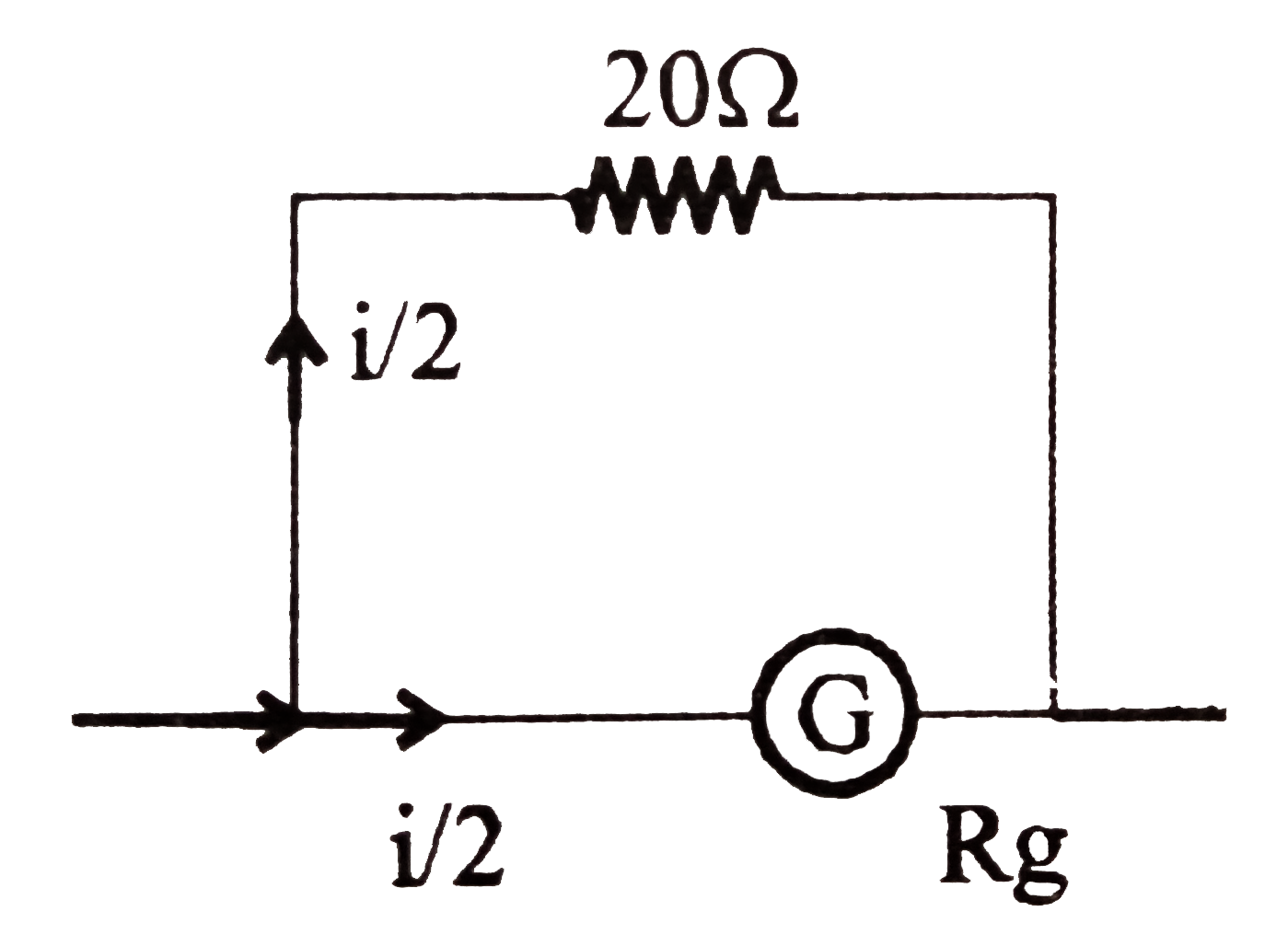When a galvanometer is shunted with a 4Ω resistance, the deflection is reduced to one-fifth. If the galvanometer is further shunted with a 2Ω wire, determine current in galvanometer now if initially current in galvanometer is I0 (given main current remains same).
I0/13
I0/5
I0/8
5I0/13
The correct Answer is:A
Step by step video, text & image solution for When a galvanometer is shunted with a 4 Omega resistance, the deflection is reduced to one-fifth. If the galvanometer is further shunted with a 2 Omega wire, determine current in galvanometer now if initially current in galvanometer is I_(0) (given main current remains same). by Physics experts to help you in doubts & scoring excellent marks in Class 11 exams.
Updated on:21/07/2023Topper's Solved these Questions
Similar Questions
When a galvanometer is shunted with a 6Ω resistance,the deflection is reduced to one-third.If the galvanometer is further shunted with a resistance of 3Ω the deflection is reduced to
View Solution[" 129.When a galvanometer is shunted with a "6Omega" resistance,the deflection is reduced to one-third.If the "],[" galvanometer is further shunted with a resistance of "3Omega" ,the deflection is reduced to "],[[" (1) one-sixth "," (2) one-fifth "," (3) one-seventh "," (4) two-third "]]
View Solution
Knowledge Check
When a galvanometer is shunted with a 4Ω resistance the deflection is reduced to1/5. If the galvanometer is further shunted with a 2Ω wire the new deflection will be (assuming the main current remains the same)
A5/13 of the deflection when shunted with 4Ω onlyB8/13 of the deflection when shunted with 4Ω onlyC3/4 of the deflection when shunted with 4Ω onlyD3/13 of the deflection when shunted with 4Ω onlyWhen a galvanometer is shunted with a 4Ω resistance the deflection is reduced to1/5. If the galvanometer is further shunted with a 2Ω wire the new deflection will be (assuming the main current remains the same)
A5/13 of the deflection when shunted with 4Ω onlyB8/13 of the deflection when shuntedwith 4ΩonlyC3/4 of the deflection when shunted with 4Ω onlyD3/13 of the deflection when shunted with 4ΩonlyWhen a galvanometer is shunted with a 4Ω resistance the deflection is reduced to1/5. If the galvanometer is further shunted with a 2Ω wire the new deflection will be (assuming the main current remains the same)
A5/13 of the deflection when shunted with 4Ω onlyB8/13 of the deflection when shunted with 4Ω onlyC3/4 of the deflection when shunted with 4Ω onlyD3/13 of the deflection when shunted with 4Ω only
[A constant current source as shown in figure is connected across a galvanometer . If galvanometer is shunted by 4Ohm resistance then current in it is reduced to 14th of initial value. If it is further shunted by 2Ω resistance, current is further reduced by ki while original current being same . Find value of k
View SolutionA galvanometer shows a reading of 0.65 mA. When a galvanometer is shunted with a 4Ω resistance, the deflection is reduced to 0.13 mA if the galvanometer is further shunted with a 2Ω wire, the new reading will be (the main current remains the same)
View SolutionWhen a galvanometer is shunted by 5 Ω resistance, the deflection is reduced to 1"/"6th of the original value. If galvanometer is further shunted with a resistance of 10Ωthe deflection (as measured from original value) will be
View SolutionIn a galvanometer, the deflection becomes one half when the galvanometer is shunted by a 20Ω resistance is

View SolutionThe deflection in a moving coil galvanometer is reduced to half when it is shunted with a 40Ω coil. The resistance of the galvanometer is
View Solution

